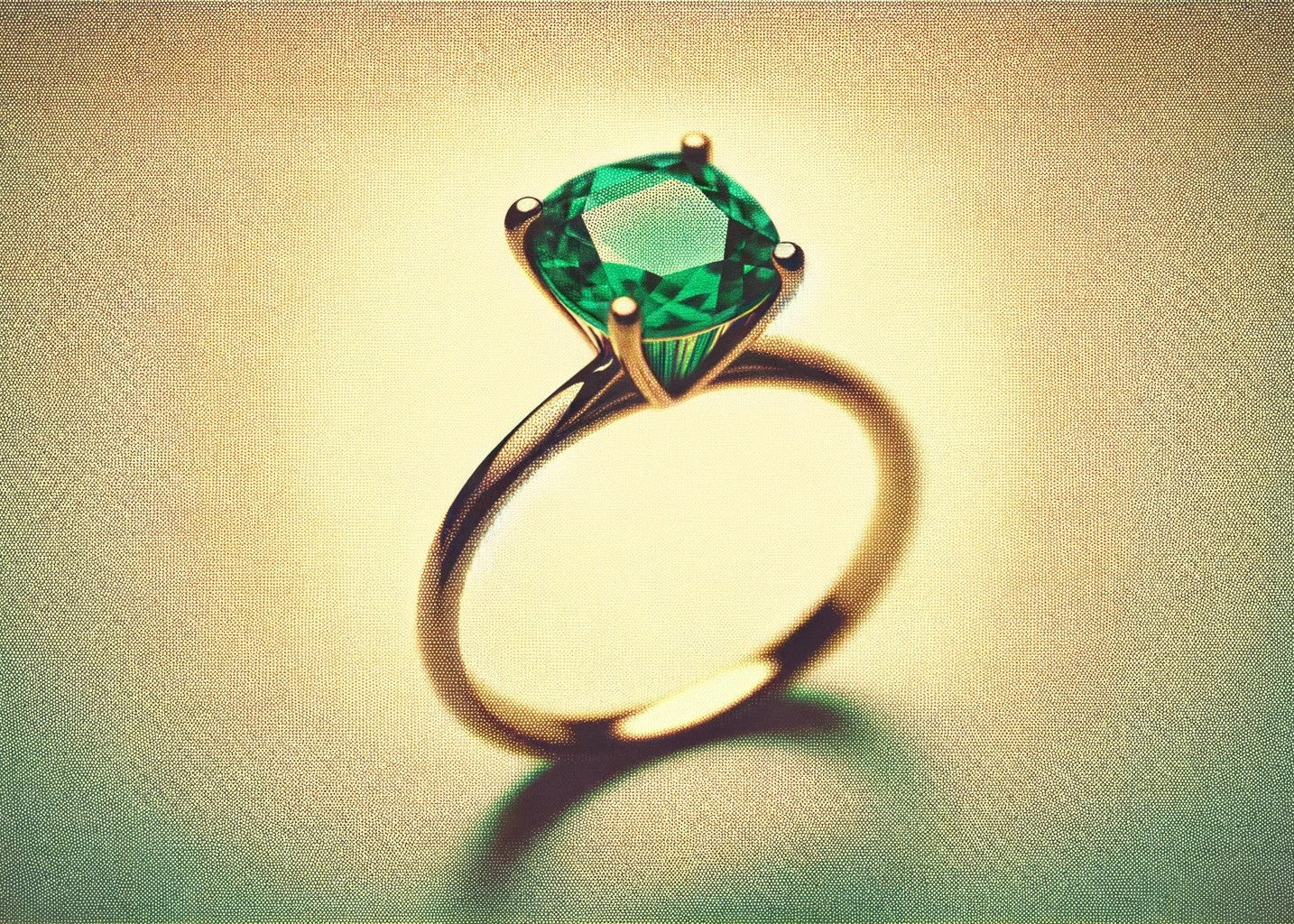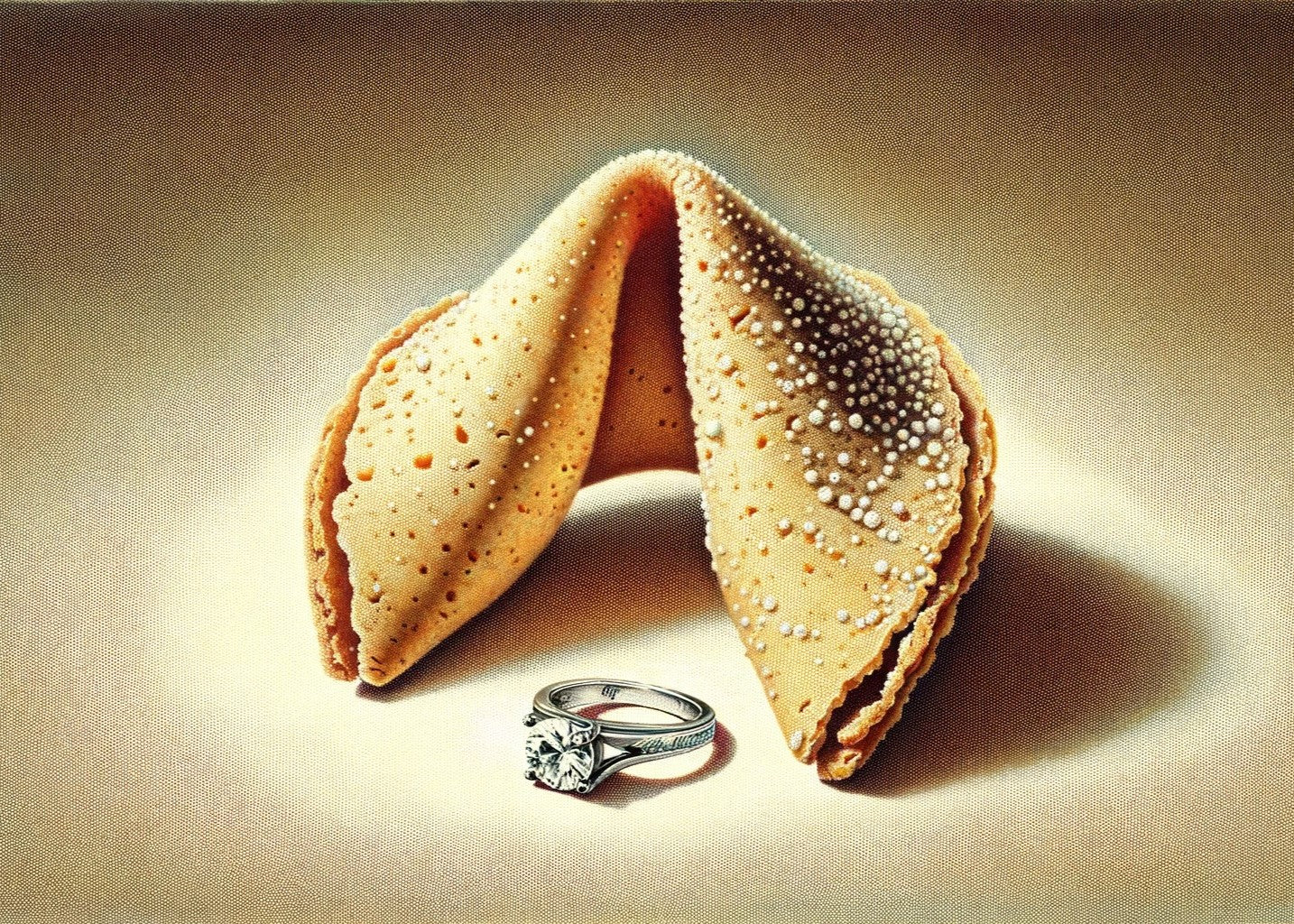Emeralds have long been treasured for their rich, vibrant hue, reminiscent of spring's vitality. They are unique among gemstones for their inclusions, often referred to as 'jardin,' which add character.
Historically, emeralds are believed to bring foresight, good fortune, and youth - they were Cleopatra's favorite gemstone! When choosing an emerald, look for a balance between colour intensity and clarity. The ideal shade is a deep, vivid green without being overly dark.
Choosing the Right Emerald: A Matter of Beauty and Meaning
The colour of an emerald is its most defining feature. The most coveted emeralds are bluish-green to pure green, with a high degree of transparency. Avoid stones with too much yellow or blue. In terms of clarity, visible inclusions are common in emeralds; however, they shouldn't overwhelm the stone's appearance.
While emeralds are generally less hard than diamonds (ranking 7.5 to 8 on the Mohs scale), they require careful handling. Choose a protective setting, like a bezel or halo, which can help shield the emerald from bumps and scratches, ensuring its longevity.
Emerald and Diamond Twist Trilogy Engagement Ring by Jodie Gearing.
Emerald Mystique: Unveiling Its Beauty and Significance
Emeralds are formed under unique geological conditions, making each stone distinct. Colombian emeralds are often prized for their quality and colour, but Zambian and Brazilian emeralds also offer exceptional beauty. When shopping, ask about the stone's origin, as this can affect both its appearance and value.
The cut of an emerald is crucial. Unlike diamonds, emeralds are often cut in a rectangular step-cut, known as the emerald cut, to enhance their colour and mitigate stress on the stone. Consider the cut as it affects the emerald's brilliance and overall look in your ring.

Where do Emeralds Come From?
Emeralds, as one of the most coveted gemstones, are mined in various parts of the world. Each region imparts unique characteristics to its emeralds, making them distinct in color, clarity, and overall quality. Colombia is renowned for producing high-quality emeralds with a vivid, deep green color.
However, emeralds are not exclusive to Colombia; they are also found in countries like Zambia and Brazil. These regions contribute significantly to the global supply of emeralds, with each offering stones that vary in hue and quality.
Zambian emeralds, for example, are known for their rich, deep green color and good clarity. Brazil, another significant producer, offers emeralds that can range from medium to dark tones, sometimes with hints of blue or yellow.
Interestingly, Nigerian emeralds, while not as internationally recognized as those from Colombia or Zambia, are gaining attention for their unique qualities. Nigerian emeralds are characterized by their deep green color, and compared to emeralds from other sources, they generally exhibit good clarity with fewer inclusions.
Ethical and Environmental Concerns in Emerald Mining
The mining of emeralds, like other precious stones, raises several ethical and environmental concerns. Small-scale artisanal mining, which accounts for a significant portion of colored stone extraction worldwide, often occurs in less regulated environments.
This type of mining is associated with various issues, including forced and child labor, criminal activities, environmental damage, and health and safety concerns. These problems are particularly pervasive in regions where emerald mining takes place under informal or artisanal conditions.
In response to these challenges, there is a growing movement towards ethical and responsible sourcing in the emerald industry. The emphasis is on ensuring that mining practices are sustainable, safe for workers, and minimally impactful on the environment.
This includes adherence to government regulations, certification schemes, traceability initiatives, and the involvement of local and international organizations in promoting responsible sourcing.

Emerald & Diamond Trilogy Ring by Natalia Rafi.
Understanding the Four Cs of Emeralds
| C | Description |
|---|---|
| Colour | Varies from yellow-green to blue-green; the most valuable is a saturated pure green. The colour should be evenly distributed throughout the stone. |
| Clarity | Unlike diamonds, inclusions and imperfections (jardin) are acceptable and can add character. Clear, inclusion-free emeralds are exceedingly rare. |
| Carat | Impacts the price significantly as larger emeralds are rarer. Emeralds appear larger than diamonds of the same carat weight due to their density. |
| Cut | Should maximize the stone's hue and luminosity. Classic emerald cuts (rectangular step-cut) are the most popular, designed to enhance colour and minimize inclusions. |
Setting and Style: Crafting the Perfect Ring
The metal setting of an emerald ring impacts its overall look. Yellow gold complements the green hue, while platinum or white gold provides a contemporary contrast.
The ring style should align with the wearer's taste. A solitaire setting highlights the emerald's beauty, while additional diamonds can add sparkle.
Consider the lifestyle of the wearer. For active individuals, a lower profile setting with secure prongs is advisable. Vintage and art deco styles can offer more intricate designs, while modern settings focus on simplicity and highlighting the emerald's natural beauty.
Caring for Your Emerald Ring
Emeralds require special care to maintain their beauty. Avoid exposure to high heat and harsh chemicals. For cleaning, use warm soapy water and a soft brush, and avoid ultrasonic cleaners. Store your emerald ring separately to prevent scratches from harder stones.
Regular professional inspections can ensure the security of the setting and the integrity of the stone. Be mindful of the emerald's inclusions, which can make it more prone to cracking. Handle your ring with care to preserve its beauty for generations.
FAQs
Is it OK to use an emerald as an engagement ring?
Emeralds are an excellent choice for engagement rings, offering unique beauty and a rich history. They are evaluated on color, clarity, cut, and carat, similar to diamonds, but require careful handling due to their relative softness. Emeralds are meaningful, with their green color symbolizing growth and renewal, making them a distinctive and sentimental choice for an engagement ring.
How do I choose an emerald engagement ring?
When choosing an emerald engagement ring, prioritize the gemstone's color, seeking vibrant hues with good saturation and medium tone. While natural inclusions are common, opt for an emerald with fewer clarity issues. Consider the emerald cut, which enhances color and minimizes inclusions, and be aware of common treatments like oil or polymer fillers used to enhance the stone's appearance.
What are the rules for wearing an emerald ring?
Emeralds require careful handling due to their fragility; avoid exposing them to harsh chemicals and extreme temperatures. Use protective ring settings like bezel or halo to safeguard against chips or fractures. Emerald rings should be removed during activities that might cause damage to the stone.
What not to do with an emerald ring?
To maintain an emerald ring, avoid rough handling and exposure to extreme heat or harsh chemicals. Do not use ultrasonic cleaners, as emeralds can fracture due to their natural inclusions. Store emerald rings separately to prevent scratches from harder stones.
What is the disadvantage of wearing emerald?
Emeralds are less hard and more prone to scratches and damage compared to other gemstones. They commonly contain inclusions, making them susceptible to damage during wear. Treatments for color and clarity enhancement may affect their long-term durability and require special care.








